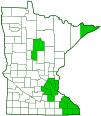hairy wood mint
(Blephilia hirsuta var. hirsuta)
Conservation • Wetland • Description • Habitat • Ecology • Use • Distribution • Taxonomy
Description |
||
Hairy wood mint is native in the United States from Connecticut to Minnesota, south to Florida, northern Alabama, and Kansas, and in Quebec and Ontario, Canada. In Minnesota it is common in the driftless area in the southeast, where it is at the western extent of its native range; uncommon in the Metro area, where it is introduced; and absent in the remainder of the state. The sole record in Cook County is historical. Hairy wood mint is found in moist bottomland forests, moderately moist upland forests, at the bases of bluffs, on the banks of streams and rivers, and along railroads and roadsides. It grows under partial sun to light shade in loamy, moist to moderately moist soil. Hairy wood mint is a 16″ to 47″ tall, erect, perennial forb that rises on one or more aerial stems from a slender, underground, horizontal stem (rhizome) and fibrous roots. The stems are sharply four-angled and unbranched or sparingly branched. Sometimes they develop a few ascending branches late in the growing season. They are moderately to densely covered with fine, white, long and short hairs. The long hairs are mostly spreading, 1⁄32″ to 1⁄16″ (1 to 2 mm) long, and denser toward the tip of the stem. The short hairs are downward curved, 1⁄64″ to 1⁄32″ (0.5 to 1.0 mm) long, and denser toward the base of the stem. The leaves are opposite and narrowly to broadly egg-shaped. The main leaves are 1 9⁄16″ to 3⅛″ (4 to 8 cm) long and up to 1½″ wide. They are on hairy, ⅜″ to 1 3⁄16″ (1 to 3 cm) long leaf stalks (petioles). They are usually broadly angled to rounded, sometimes shallowly heart-shaped at the base, and are angled or tapered to a sharp point at the tip. The upper surface may be hairless or sparsely covered with short fine hairs, rarely also with scattered longer hairs. The lower surface is sparsely to moderately covered with short fine hairs, sometimes also with longer hairs along the veins. The margins are finely toothed. There is often a pair of much smaller leaves rising from the point where the petiole attaches to the stem (axil). The inflorescence is a spike of 1 to 5 densely crowded, noticeably separated, head-like clusters of small flowers at the end of the stem and branches, and single similar clusters in the upper leaf axils. Each cluster in the terminal spike is subtended by a pair of sometimes inconspicuous modified leaves (bracts). Each flower is subtended by a pair of ¼″ to ⅜″ (6 to 10 mm) long, lance-shaped to narrowly egg-shaped bractlets. The flowers are 5⁄16″ to ½″ (8 to 12 mm) long. There are 5 outer floral leaves (sepals), 5 petals, 2 stamens, and 1 style. The sepals are green and ⅛″ to ¼″ (4 to 7 mm) long. They are fused at the base into a short tube then separated into 5 narrowly triangular to nearly linear lobes. The upper lobes are longer than the lower lobes. The bractlets and sepals have long spreading hairs on the margins. The petals are white and may be slightly tinged with blue. They are united at the base into a floral tube then separated into 2 lips. The outer surface is moderately to densely hairy. The upper lip is spreading or slightly curved backwards and has 2 shallow lobes. The lower lip is straight or slightly spreading, has 3 lobes, and has numerous small purple spots. The stamens protrude from the corolla at maturity. The style has 2 lobes at the tip and also protrudes from the corolla at maturity. The fruit (schizocarp) develops from the dried ovary and splits into 4 egg-shaped, tan to reddish-brown nutlets. |
||
Height |
||
16″ to 47″ |
||
Flower Color |
||
White |
||
Similar Species |
||
Habitat |
||
Moist to moderately moist. Bottomland and upland forests, bluff bases, stream banks, railroads, roadsides. Partial sun to light shade. Loamy soil. |
||
Ecology |
||
Flowering |
||
May to August |
||
Pests and Diseases |
||
|
||
Use |
||
|
||
Distribution |
||||
|
Sources |
|||
| 9/25/2023 | ||||
Nativity |
||||
Native |
||||
Occurrence |
||||
Common |
||||
Taxonomy |
|||
| Kingdom | Plantae (Plants) | ||
| Division | Tracheophyta (Vascular Plants) | ||
| Subdivision | Spermatophytina (Seed Plants) | ||
| Class | Magnoliopsida (Dicots) | ||
Order |
Lamiales (Mints, Plantains, Olives, and Allies) | ||
Family |
Lamiaceae (Mint) | ||
| Subfamily | Nepetoideae | ||
| Tribe | Mentheae | ||
Subtribe |
Menthinae (balms, mints, and thymes) | ||
| Genus | Blephilia (wood mints) | ||
| Species | Blephilia hirsuta (hairy wood mint) | ||
There are two varieties of Blephilia hirsuta. B. h. var. hirsuta has hairy stems and leaves, B. h. var. glabra has hairless (glabrous) stems and leaves. B. h. var. glabra is restricted to Vermont. It was last collected in 1898, and it is now presumed to be extinct. Currently, mosty sources do not list any varieties. |
|||
Synonyms |
|||
Common Names |
|||
hairy pagoda-plant hairy wood mint hairy woodmint |
|||
Glossary
Axil
The upper angle where a branch, stem, leaf stalk, or vein diverges.
Bract
Modified leaf at the base of a flower stalk, flower cluster, or inflorescence.
Bractlet
A small, often secondary bract within an inflorescence; a bract that is borne on a petiole instead of subtending it; bracteole.
Linear
Long, straight, and narrow, with more or less parallel sides, like a blade of grass.
Petiole
On plants: The stalk of a leaf blade or a compound leaf that attaches it to the stem. On ants and wasps: The constricted first one or two segments of the rear part of the body.
Rhizome
A horizontal, usually underground stem. It serves as a reproductive structure, producing roots below and shoots above at the nodes.
Schizocarp
A dry fruit formed from a compound ovary that splits into two or more parts (mericarps) at maturity.
Sepal
An outer floral leaf, usually green but sometimes colored, at the base of a flower.
Visitor Photos |
|||||
Share your photo of this plant. |
|||||
| This button not working for you? Simply email us at info@MinnesotaSeasons.com. Attach one or more photos and, if you like, a caption. |
|||||
Luciearl |
|||||
First time seeing this plant. A couple of these plants popped up in an area this summer. Fairly sunny and dry (everything was dry this summer). |
|||||
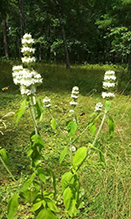 |
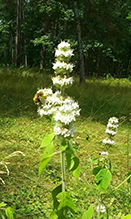 |
||||
MinnesotaSeasons.com Photos |
|||||
Plant |
|||||
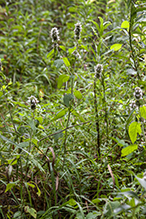 |
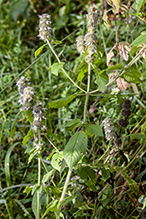 |
||||
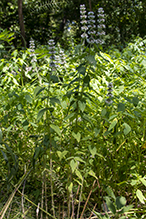 |
|||||
Inflorescence |
|||||
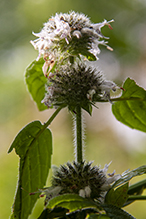 |
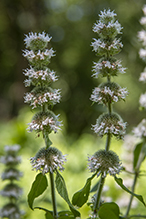 |
||||
Leaves |
|||||
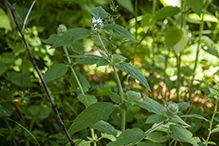 |
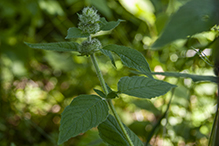 |
||||
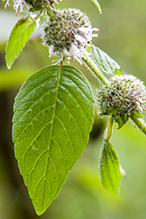 |
|||||

Slideshows |
||

Visitor Videos |
|||
Share your video of this plant. |
|||
| This button not working for you? Simply email us at info@MinnesotaSeasons.com. Attach a video, a YouTube link, or a cloud storage link. |
|||
Other Videos |
|||
| Hairy Wood Mint: Edible & Medicinal The Cargo Cult Café |
|||
About
Mar 14, 2016 ***Attention*** Plight to Freedom is now The Cargo Cult Café. Same type of content with added weirdness. Hairy Wood Mint, Blephilia hirsuta Please help this project grow by liking, subscribing, leaving a comment or tip and sharing this information with your friends and family. https://www.cargocultcafe.com/hairy-wood-mint/ |
|||

Visitor Sightings |
|||||
Report a sighting of this plant. |
|||||
| This button not working for you? Simply email us at info@MinnesotaSeasons.com. Be sure to include a location. |
|||||
| Luciearl 8/23/2023 |
Location: Lake Shore First time seeing this plant. A couple of these plants popped up in an area this summer. Fairly sunny and dry (everything was dry this summer). |
 |
|||
MinnesotaSeasons.com Sightings |
|||||

Created: 2/21/2020
Last Updated:
